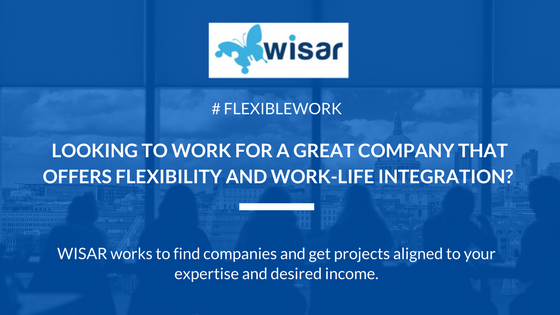How many times have we heard “it is not well seen to leave work before my boss”, “I do not understand why we have these endless workdays at the office” or “it is impossible to get work-life balance”.
These kind of complains are common everywhere. Unfortunately, working twelve-hour workdays, without a proportional increase in productivity[1], is still common, as it is the enormous difficulty for finding a good balance between our personal and professional lives.
If we compare today with the beginning of the industrial revolution that took place in the second half of the eighteenth century, when the working models we know were shaped, it is clear the business landscape has partly changed.
The company culture based on vertical structure work, is falling gradually falling into disuse, mainly thanks to the introduction of Internet in the late 90s and its endless supply of knowledge, information and forms of communication.
However, flexibility and family-friendly policies at work are not yet the norm and too often they are not an important part of the business strategy.
The scenario can vary depending on the company and the social context within the country. In the U.S for example, 36% of workforce do not have a contract as an employee. The employer-employee contract has evolved, so has the way employers pay employees and the relationship established between employee and boss.
Based on current workforce growth rates found in Freelancing in America: 2017, the majority of the US workforce will freelance by 2027.
On the other hand, the governmental policies of Nordic countries such as Iceland, The Netherlands, Sweden and Finland prioritize life over work so when they are at work, they enjoy a high degree of flexibility, something particularly beneficial for professional fathers and mothers.
In Sweden’s efforts to achieve gender equality, each parent is entitled to 240 of the 480 days of paid parental leave, while in Spain, the length of maternity leave is 112 days (16 weeks) and fathers receive 15 days of paid paternity leave, far from the European average, with a maternity leave length of 28 weeks (196 days).
Various studies have also shown that flexibility at work is closely correlated to workers’ happiness, greater performance and higher productivity.
Another research also reveals that 86% of workers recognize being more productive and more committed to their work when they can balance work demands with their private lives.
Since labour mobility has increased rapidly over the recent years, retaining top talent is a struggle for many businesses. Companies have to keep their best employees and prevent them from scouting for new jobs with better work-life integration.
A situation that forces, more and more frequently, to implement strategies to improve motivation and cohesion in the workplace and make employees happier and more productive. In this scenario, flexible work obviously becomes a healthy, as well as a profitable option for the company and its economy.
In fact, Timewise, a well-known consultant dedicated to flexible work research, revealed last year that companies that resist promoting strategies of flexibility and conciliation, maintaining traditional work patterns are at risk of losing their best employees.
But what exactly is flexible work?
A few years ago, we would have defined a flexible job like the one that allowed us to work from 8 to 15 hours, for example. But today, flexibility in the workplace also means many other things and recognizes different modalities.
According to Shawn Murphy, writer and supporter of optimism in the workplace, work flexibility occurs when “businesses put into place practices that give freedom to employees. The freedom focuses on letting employees do their best work in a manner that aligns with their needs”.
A working modality that aims to ensure that employees have both confidence and decision power to perform their tasks, working for example with clear objectives and strategies but without constant pressure and control.
Something that can be achieved through flexible hours, compressed work weeks, offer part-time positions or remote work that allows tasks to be carried out from anywhere, among many others.
A large number of companies in the US, such as Zapier, Arkency, Buffer or FlexJobs itself, a platform specialized in finding flexible employment, part-time work and independent work among others, have 100% remote teams.
A kind of proposals that promote confidence and autonomy of professionals at the same time.
But how will we build a flexible working culture? Is the future of work flexible? And if so, how will the leaders change their conservative mindset and bet on more flexible ways of working? And how professionals will adapt themselves to this new scenario?
We need to make sure we’re all working together to change the situation, and especially in some sectors, regions or cultural contexts. As we have seen, the data show that flexible working, work-life balance and remote work make employees and workers happier. The benefits are also evident for companies.Flexible staffing initiatives reduce payroll cost and can save costs on office space, supplies and utility bills.
Flexible work options also help business retain their talent pool and keep companies competitive in the market. In addition, companies can create more diverse teams, improve engagement in their teams and increase levels of productivity.
But also, and according to a study conducted by Flexing It that shows how the workforce will be in 2030, reveals that “independent and remote work will be an increasing reality”.
New forms of employment that will become quickly an important part of businesses.
According to the report on the Future of Work of the WEF (Davos 2016), the so-called Fourth Industrial Revolution will mean in the coming years a sudden change in the labor market as well as the skills necessary to success in this new scenario.
“The Fourth Industrial Revolution, which includes developments in previously disjointed fields such as artificial intelligence and machine-learning, robotics, nanotechnology, 3-D printing, and genetics and biotechnology, will cause widespread disruption not only to business models but also to labour markets over the next five years, with enormous change predicted in the skill sets needed to thrive in the new landscape”.
Today, business leaders do not always take the risk of betting on these types of changes because they continue to feel more comfortable knowing they can follow up their employees at any time during office hours.
In addition, this paradigm shift implies changes in the management systems of companies. Organizational and automation models that allow in turn achieving business objectives as well as the needs of its employees.
The employee, on the other hand, also requires a change of attitude, assuming greater degrees of self-management with those who do not count when growing professionally in work environments based on presenteeism.
It is also known the lack of involvement of junior employees who have difficulties when it comes to feeling part of a company. Aspect that businesses must also overcome through policies that encourage the retention of talent while being aligned with the objectives of the organization.
Probably not all jobs can adapt to flexible work patterns. Surely not all professional profiles and individuals are prepared or are willing to assume this work modality, either for lack of habit, cultural beliefs or work methods.
It is clear that flexibility at work still has to face great challenges, by companies and professionals. However, there is no doubt that it is bet on the future that will improve the well-being of employees and families, and encourage more profitable and successful businesses.
[1] According to the OECD, the Spanish employees worked an average of 1,691 hours in 2015 (320 hours more than Germans). And Spain has a productivity rate over € 36 per hour while Germany has € 55.



